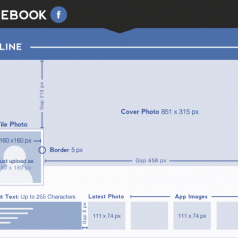June 9, 2014

As a social media marketer, it can be frustrating to hear others say that social media offers no business value. Some people may not believe that engagement or social interactions can lead to an increase in sales. Others may see social media marketing as a channel that only works for companies who target millennials and youths.
Social media may not be the most cost-effective marketing channel for a certain business, of course. You can say that about SEO or email marketing too. But for a lot of companies, social media marketing is extremely important to their online strategy. Look at Red Bull or Blank. Do you really think some of the biggest brands in the world would invest millions of dollars in a strategy that does nothing for their bottom line?
People need to remember that social media is in its infancy. It's really only 15 years old. Friends Reunited, noted as the first social network with any prominence, started in Great Britain in 1999. Facebook launched in 2004 (called TheFacebook then) and really didn't foster the social ad space until 2009 . When the first Google ads launched in 2000, how much do you think people were spending?
As a marketer, I believe that a marketing investment is only worth its salt if there's tangible value like ROI or an increase in sales. I also believe that social media marketing can produce that kind of value.
It takes trailblazers to prove the value of any new technology. It takes time, analysis, testing and a lot of data. Here's some of the data that marketers have collectively gathered to grasp the true value of social media marketing.
1. There's Monetary Value in Social Media Impressions
99 percent of sales generated from online branding ad campaigns were from people that saw, but did not interact with, ads— proof that it is the delivery of the marketing message to the right consumer, not the click, that creates real value for brand advertisers.
A Facebook study conducted in partnership with Datalogi used a new tool that connects ad exposure (seeing a brand’s ad) on Facebook with in-store purchases (buying the brand’s product). This tool enables marketers who have offline sales objectives to measure and optimize their digital campaigns, and this research represents a first look at the key conclusions from a study of nearly 50 digital campaigns.
The company's research recommends using engagement as a way to test which ads work the best. Max Kalehoff, SVP of marketing at SocialCode, says the threshold rate of engagement is around 2% to 5%, though it varies by industry. At that point, the company recommends putting money behind a post and turning it into a promoted post. A continuing engagement rate of 1% to 4% is enough to justify further spending, he says.
2. You Can Target More than Millennials with Facebook
45% of Internet users aged 65+ use Facebook
According to a Pew Research study, among adult Facebook users, the average number of friends is 338, and the median (midpoint) number of friends is 200 which means that half of all Facebook users have more than 200 friends, and half have less than 200.
Younger users tend to have significantly larger networks than older users: 27% of 18-29 year old Facebook users have more than 500 friends in their network, while 72% of users age 65+ have 100 friends or fewer.
3. People are Actively Liking Content Posted by Their Friends
44% of Facebook users “like” content posted by their friends at least once a day, with 29% doing so several times per day.
4. Adults are active on social media too
54% of adult internet users post original photos or videos online that they themselves have created in 2013. We call them creators and their number has grown from 46% of internet users in 2012.
47% of adult internet users take photos or videos that they have found online and repost them on sites designed for sharing images with many people. We call them curators and their number has grown from 41% of internet users last year.
5. More people are clicking on Facebook Ads
Facebook ad Click-Through-Rate is up 160% year-over-year and 20% quarter-over-quarter.
Facebook ad clicks are up 70% year-over-year and 48% quarter-over-quarter.
Revenue referred from most social channels to retail sites dropped quarter-over-quarter, except for Facebook
